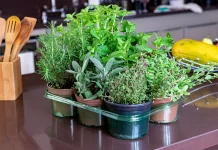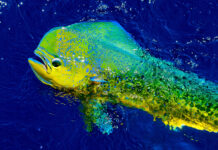Camping is all about disconnecting from the hustle and bustle of daily life, immersing yourself in the tranquility of nature, and enjoying the simplicity of the outdoors. When you combine that experience with the rhythmic elements of electronic music, you create a unique fusion that celebrates both the serenity of nature and the energy of technology. In this article, we will walk through how to compose an electronic song that captures the essence of camping, using beats, melodies, and sounds inspired by nature. Let’s explore how you can turn a peaceful night under the stars into a vibrant, yet soothing electronic track.
Table of Contents
Toggle1. Finding Inspiration from Nature
When you think of camping, what comes to mind? Perhaps the crackling sound of a campfire, the gentle rustling of leaves, the chorus of crickets, or the distant call of an owl. These natural sounds can serve as the foundation of your electronic song.
- Field Recording: A great way to start composing is by incorporating actual nature sounds. Bring a portable recorder with you on your camping trip and capture the environment—birds chirping, wind blowing, or even the sound of footsteps on gravel. These sounds can then be looped or layered into your track, giving it a raw, organic feel that instantly connects listeners to the outdoors.
- Synthesizing Nature: If you don’t have access to field recordings, you can create nature-inspired sounds using synthesizers. For instance, you can emulate the sound of running water with a slow, trickling synth arpeggio or use white noise to mimic wind. The key is to bring the essence of the wilderness into your production.
2. Choosing the Right Tempo and Rhythm
The tempo of your electronic camping song should reflect the relaxed atmosphere of nature, but with a slight pulse that mimics the adventure and excitement of being outdoors. Here are some ideas:
- Chill and Downtempo Beats: If your camping experience is all about peaceful relaxation, opt for a slower tempo in the range of 60-90 BPM. This will evoke a sense of calm and allow the listener to unwind, just as they would around a campfire.
- Mid-Tempo Groove: For a more adventurous or upbeat camping experience, such as a hike or a night of stargazing, you can raise the tempo to around 100-120 BPM. This gives your song a sense of motion and excitement while still maintaining the laid-back vibe of camping.
- Natural Rhythms: To add a unique twist, try incorporating rhythms that mimic the natural world. Think about the steady pace of walking through the woods, the rhythmic crackle of a campfire, or even the sound of rain tapping on a tent. These can inspire drum patterns or percussive elements in your track.
3. Layering Melodies and Harmonies
Melody and harmony play a crucial role in setting the mood of your track. For a song about camping, you’ll want to evoke a sense of wonder, adventure, and serenity all at once.
- Ambient Pads: To create an expansive atmosphere, use ambient synth pads or sustained chords that feel open and wide, much like the sky over a campsite. Soft, evolving harmonies will add depth to your track and give the listener a sense of space and freedom.
- Nature-Inspired Melodies: Incorporate melodies that rise and fall like the contours of a mountain range or follow the rhythm of flowing water. A simple, repeating melody can act as the “voice” of the song, leading listeners through the landscape of your track, much like a hike through the woods.
- Instrument Choice: While electronic music often relies heavily on synthesized sounds, you can blend in acoustic elements, such as a soft acoustic guitar or flute, to reflect the organic, natural setting of camping. These instruments can complement the electronic layers and create a rich, textured soundscape.
4. Adding Textural Elements
To make your camping-inspired electronic song truly immersive, focus on building texture. Texture in music refers to the layers of sound and how they interact with each other.
- Nature Sounds as Percussion: Remember those field recordings of rustling leaves or campfire crackles? You can use them as subtle percussive elements in your track. For example, the crackle of a fire could replace a traditional snare, or the sound of crickets could fill in the space where hi-hats would typically go.
- Dynamic Builds and Breakdowns: Just as camping can shift from peaceful moments to bursts of excitement (like spotting a shooting star or hearing a sudden gust of wind), your song should have moments of tension and release. Build up the layers slowly with subtle beats, then drop them back to softer, more intimate moments where just the nature sounds and ambient melodies remain.
5. Crafting Lyrics or Vocal Elements (Optional)
Many electronic tracks are instrumental, but if you want to include vocals in your camping-inspired song, consider writing lyrics that capture the essence of the outdoor experience. Here are some ideas for lyrical themes:
- Wilderness Adventure: Write about the thrill of exploration—setting up camp, hiking through unknown trails, or conquering a mountain. Focus on the sense of freedom that comes with being in the wild.
- Connection to Nature: Your lyrics can reflect the peaceful connection between yourself and the natural world. Singing about the beauty of the forest, the calm of the lake, or the brilliance of the night sky can create a reflective mood.
- Friendship and Bonding: Camping often involves spending quality time with friends and family. Craft lyrics that highlight the camaraderie around a campfire or the joy of sharing stories under the stars.
If you’re not comfortable with full lyrics, you can include vocal samples, chopped phrases, or even spoken word elements that evoke the camping experience without the need for complex verses or choruses.
6. Finalizing and Mixing the Track
Once all the elements are in place, it’s time to bring your song together. Focus on balancing the electronic elements with the nature sounds to create a seamless blend. The key is to ensure that the nature-inspired elements enhance the electronic music without overpowering it.
- Panning and Spatial Effects: Use panning (moving sounds from left to right in the stereo field) to create a sense of space, as if the listener is standing in the middle of a forest. You can place ambient sounds like wind or birds in the background, while melodies and beats remain centered.
- Reverb and Delay: Applying reverb and delay effects can give your track a sense of depth, as if the sounds are echoing across a wide open space. This can evoke the feeling of being in a vast outdoor environment, surrounded by nature.
Bringing Nature and Technology Together
Composing an electronic song about camping is all about finding the balance between the organic and the synthetic. By incorporating natural sounds, creating rhythmic patterns that reflect the environment, and layering harmonies that evoke the vastness of the outdoors, you can craft a track that feels both grounded in nature and alive with electronic energy. Whether your song is meant for relaxing by the campfire or capturing the excitement of an outdoor adventure, the fusion of these two worlds will make for a truly unique listening experience.
So grab your tent, pack your gear, and start composing—nature is waiting to inspire your next electronic masterpiece!








